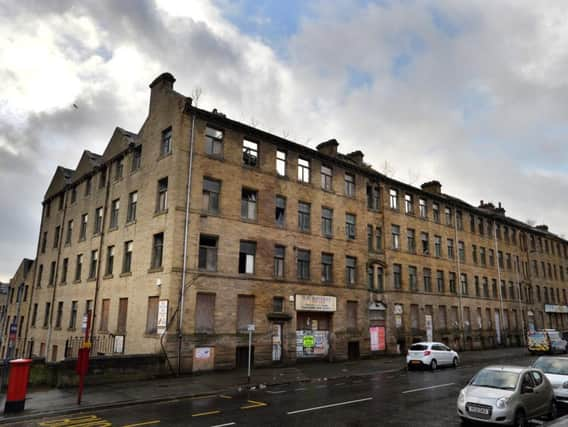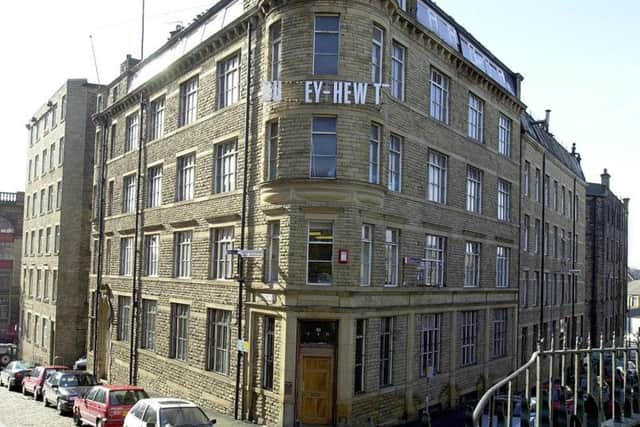How a neglected Victorian warehousing district in Bradford could become 'the Manhattan of Yorkshire'


Once an industrial warehousing district, it's now a Conservation Area but nevertheless a neglected one associated with crime, vice and decay.
While nearby Little Germany - another warehouse quarter defined by its 19th-century architecture - has regenerated and thrived to the extent that it is a popular location for filming period dramas, Goitside has struggled.
Advertisement
Hide AdAdvertisement
Hide Ad

Last week it suffered another setback when Storm Ciara sealed the fate of an historic warehouse that was damaged beyond repair. Demolition was necessary, and its loss has spurred Bradford Civic Society to call for the local council to apply for Heritage Action Zone status from Historic England, which would allow Goitside to access funding for renewal.
Despite being a Conservation Area, heritage bodies still consider it to be at risk as many of its landmark buildings are underused, vacant or falling into disrepair.
A chequered past
Goitside is named after a medieval goit which redirected Bradford Beck to power the early watermills in the area. It's considered the cradle of industry in the city, where the first mills, foundries and factories were built. The surviving buildings mostly date from a redevelopment and slum clearance scheme in the late 19th century and are well-preserved - the quarter has changed little since the 1920s.
Advertisement
Hide AdAdvertisement
Hide AdSeveral tenement blocks in the Goitside are considered to be the first examples of early social housing in Bradford, and were saved from demolition by the Victorian Society, who campaigned for their refurbishment around 20 years ago.
It was once a reception neighbourhood for Irish immigrants fleeing the potato famine, but later grew into a red light district. It became even more notorious when Stephen Griffiths, known as the Crossbow Cannibal, murdered three women engaged in sex work in 2009 and 2010.
Nowadays, its most successful remaining industry is entertainment. One of the UK's most famous drag pubs, The Sun, can be found in the Goitside and Sackville Street is the city's LGBT village. The Fighting Cock is considered to be the best real ale pub in Bradford, and the 1 in 12 Club is one of the best-known 'anarchist' clubs in the world and a popular music venue.
The valuation barrier
Its ornate Victorian warehouses are ripe for conversion into housing and offices - but as Amir Hussain, who owns an architecture practice in Goitside and converted the derelict Diplomat Hotel into his head office, points out, market conditions mean developers struggle to make a profit from projects in the city centre.
Advertisement
Hide AdAdvertisement
Hide Ad"I think Goitside is one of the most evocative places in the city. You see areas that have suffered from unsympathetic development, but Goitside has not had that level of intervention in the 1980s and 90s. The original buildings are still there, although there is decay and faded grandeur."
His own offices have proved to be an anchor for a district in decline - the Diplomat had been empty for 10 years before Yeme Architects bought the building. They've retained many of the original features, including the frontage and even the grand piano.
They chose the former pub for its prominent location - Mr Hussain describes it as a 'grand, powerful building'.
Advertisement
Hide AdAdvertisement
Hide Ad"The area around us was very deprived four years ago and there was very little commercial or evening activity. We were quite isolated at first. I'd say we were the first visible intervention, but now around 70 per cent of the buildings around us have been brought back into use.
"There is more residential accommodation now, but it is quite low-value with low-income tenants, so you don't get the breadth of diversity that encourages bars and cafes to spring up. There are still issues with prostitution, but our presence has moved it on from around us.
"The area has an incredible feel and it is so distinctive, and the way forward is to create more evening activities. All of the buildings have the potential to be developed, but they are not always commercially viable.
"There are people here like the Bradford Sock Company, and the hi-tech businesses inside the Legend Building - but they are not that visible yet. We need to be more imaginative to attract public funding and a broader demographic.
Advertisement
Hide AdAdvertisement
Hide Ad"Bradford city centre has an underperforming property market, you can buy an apartment for £40,000 - but you can't build them for less than that. Developers won't build £100,000 flats because they won't take the risk, they can't sell them - it undermines quality schemes. There is a valuation barrier holding the Goitside back.
"But the Goitside has been fantastic for us - we've been able to recruit a lot of people, and we've gained a lot more attention for our work. We've given the Diplomat Hotel its identity back."
A hotbed of intrigue
Si Cunningham from the Bradford Civic Society coined the 'Manhattan of Yorkshire' label when he noticed its resemblance to New York's Meatpacking District.
"There has been massive decline in the Goitside. It often suffers from comparisons to Little Germany, which perhaps had a higher concentration of warehouses built by the same group of people - German Jewish merchants. They mostly remain intact.
Advertisement
Hide AdAdvertisement
Hide Ad"Goitside fell into disrepair as soon as the machines stopped whirring, like much of Bradford. It has a fascinating social history, with the 1 in 12 Club and the council housing. It's always been a bubbling hotbed of intrigue.
"The council have been relucant to commit to Heritage Action Zone status, possibly because they feel other areas of Bradford are more deserving. But it is close to the Oastler Market, which is at the centre of their city village development plans, and the university is on the other side. Things are happening nearby."
Stagnation and a shift south
Architectural historian Dr George Sheeran from Bradford University is less optimistic about the Goitside's future, believing that the migration of commerce and trade to the southern end of the city centre has sounded the death knell for the area.
"The Goitside had a large Irish population - you can still see the Catholic church, St Patrick's, that was built for them in the 1850s. It was densely populated and an unsanitary area until the early 20th century, when the slums were cleared.
Advertisement
Hide AdAdvertisement
Hide Ad"It's always been rundown, despite efforts to revive it. In the late 20th century, the red light district moved from Lumb Lane into the Goitside."
Although Dr Sheeran believes that some of the mills could be converted profitably - citing the example of Urban Splash's transformation of Manningham Mills - he sees the Goitside's location as a stumbling block.
"Location matters. The Goitside is a more difficult area - it is not easy to access. The warehouses have very small entrances and are built on sloping sites.
"But the architecture is outstanding - it says a great deal about Bradford's past as a huge marketing centre with a global reach.
Advertisement
Hide AdAdvertisement
Hide Ad"Little Germany is a similar site, but the warehouses have been occupied for commercial use right up until the 1970s, 80s and 90s and were then refurbished. People realised what they had and new businesses moved in. They still find it a useful place to be based in.
"Little Germany also has a lot of written history, but references to the Goitside play up its slummy nature - the area just never got off to a great start.
"The action began to move south, away from Goitside and the markets, in the 1980s when the new retail park at Canal Road opened, and later the Broadway - but Little Germany was in the right place to be part of that shift. Goitside remained out on a limb, and that is likely to get worse with the demolition of the Oastler Market and the move away from the north end.
"I'm not sure what the future is for the Goitside. The council houses were earmarked for demolition in the 1990s and were saved by the Victorian Society - they look splendid now. We can only hope that fate doesn't await the warehouses. Stagnation seems to be the order of the day now."